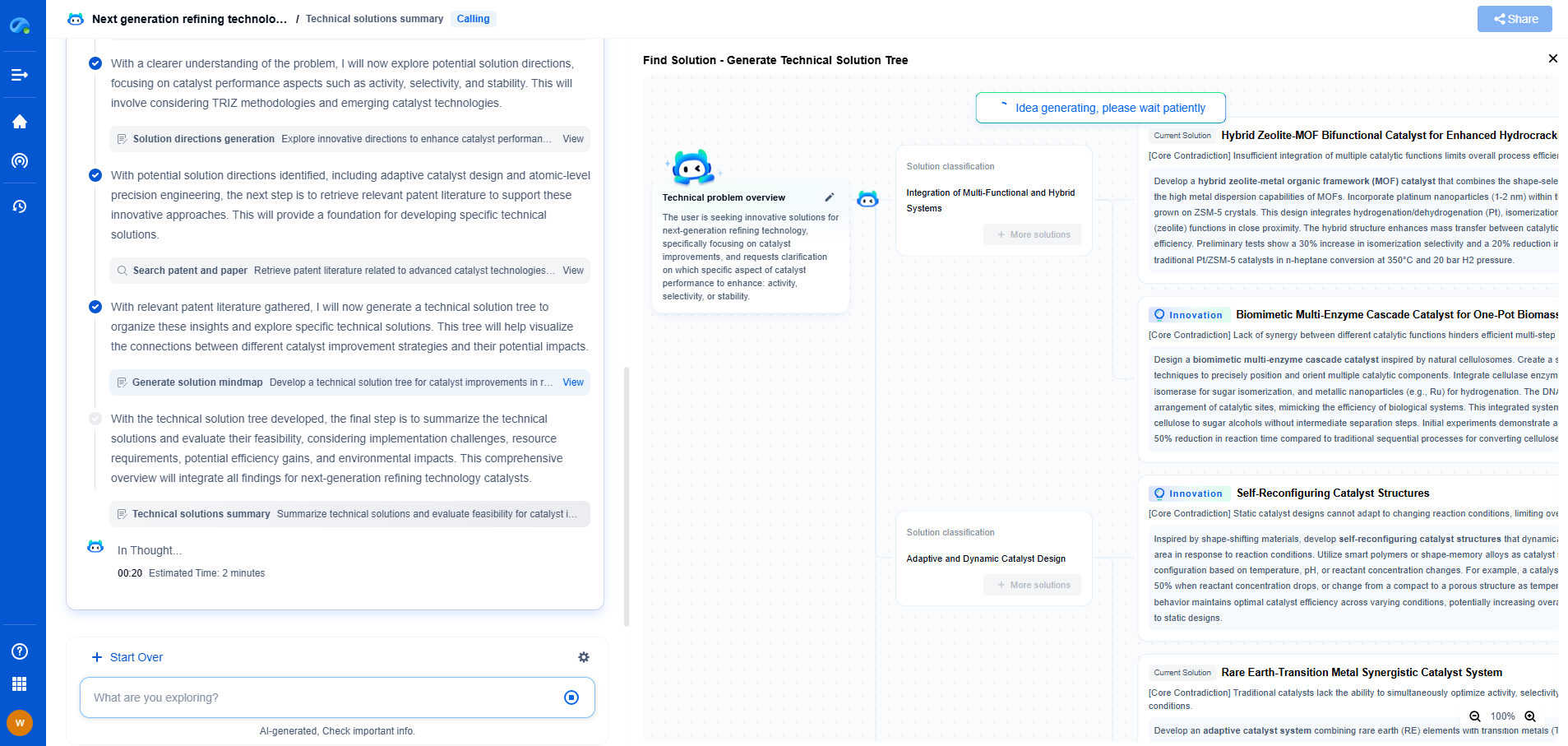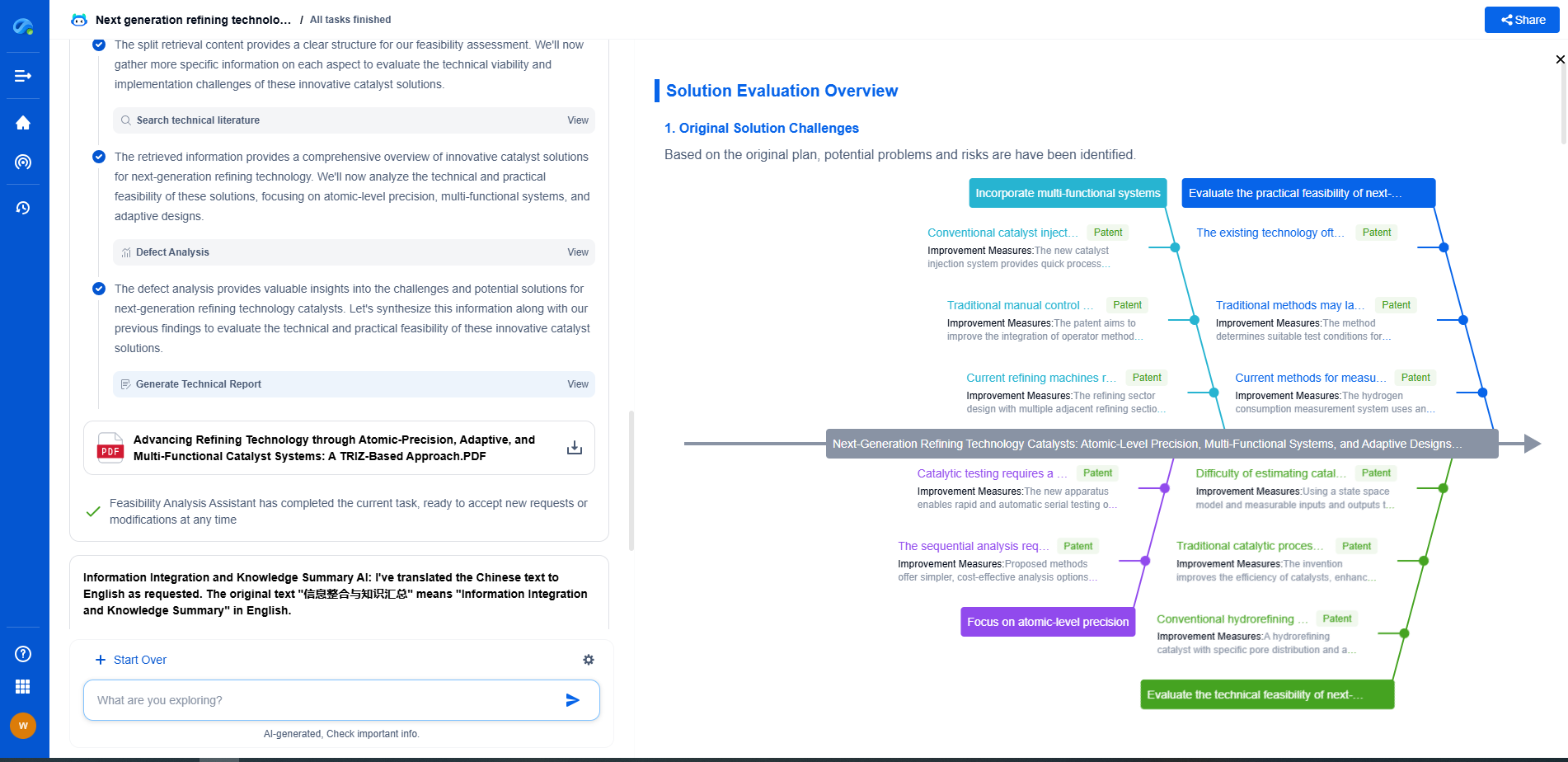How Do Ambient Vaporizers Work in LNG and Liquid Hydrogen Systems?
JUL 21, 2025 |
In the world of cryogenic fluids, two of the most common gases that require efficient and safe handling are liquefied natural gas (LNG) and liquid hydrogen. Both substances are stored and transported at extremely low temperatures. To utilize them effectively, they must be converted back into their gaseous forms. This is where ambient vaporizers come into play. Let's delve into how these vital components work within LNG and liquid hydrogen systems.
Basics of Ambient Vaporization
Ambient vaporizers are specialized heat exchangers that facilitate the phase transition of liquefied gases from a liquid to a gaseous state. Unlike other vaporizers that rely on external heat sources such as steam or electric heaters, ambient vaporizers draw heat from the surrounding environment. This makes them an energy-efficient option, minimizing operational costs and reducing the environmental impact.
Working Principle
The operation of ambient vaporizers is founded on the principle of heat exchange. The core component is a series of heat exchange fins or tubes designed to maximize the surface area exposed to ambient air. As the cold liquid, be it LNG or liquid hydrogen, passes through these tubes, the ambient air's temperature causes the liquid to absorb heat naturally. This gradual heating causes the liquid to vaporize, turning it into its gaseous state, ready for use in various applications.
LNG Systems
In LNG systems, ambient vaporizers are particularly advantageous due to their simplicity and reliability. The natural gas transported as LNG must be regasified at the receiving terminals to make it suitable for pipeline distribution. Ambient vaporizers are typically preferred in regions with moderate to warm climates, where the ambient air temperature is sufficient to facilitate effective vaporization without additional heat input. This not only lowers energy consumption but also reduces greenhouse gas emissions associated with other vaporization methods.
Liquid Hydrogen Systems
Liquid hydrogen poses unique challenges compared to LNG due to its lower boiling point and smaller molecular size. Despite these differences, ambient vaporizers play a critical role in the transition of liquid hydrogen to its gaseous form. In hydrogen applications, efficiency and safety are paramount. The ambient vaporizers used must be specifically designed to handle the extremely low temperatures and potential embrittlement issues related to hydrogen. Manufacturers often use materials like stainless steel or specialized alloys to ensure durability and safety in these demanding conditions.
Advantages of Ambient Vaporizers
The primary advantage of ambient vaporizers lies in their operational efficiency. By utilizing free ambient air, they minimize the need for external energy sources, offering significant cost savings over time. Additionally, they have a lower environmental footprint compared to traditional heating methods, aligning with sustainability goals. Their maintenance requirements are generally minimal, and their simple design ensures a long lifespan, reliability, and easy integration into existing systems.
Challenges and Considerations
Despite their benefits, ambient vaporizers are not without challenges. Their efficiency is highly dependent on the ambient temperature, which means they may require supplementary heating during colder months or in cooler climates. This can complicate system design and necessitate a hybrid approach combining ambient and forced heating methods.
Moreover, the initial cost of ambient vaporizers can be higher than traditional systems. However, the long-term energy savings and reduced environmental impact often justify this initial investment.
Conclusion
Ambient vaporizers are an integral component in the handling and utilization of LNG and liquid hydrogen. They offer an energy-efficient, environmentally friendly solution to the regasification of these cryogenic liquids. While they require thoughtful consideration regarding climate and cost, their benefits often outweigh these challenges, making them a preferred choice in many applications worldwide. As the demand for cleaner energy sources grows, the role of ambient vaporizers in LNG and hydrogen systems is likely to expand, paving the way for more sustainable energy solutions.
As clean energy and decarbonization drive new breakthroughs in hydrogen storage, CO₂ transport, and alternative gas carriers, keeping pace with technical trends and patent activity is critical to staying competitive.
Patsnap Eureka helps innovators in compressed gas storage, high-pressure tank design, gas sensor systems, and pipeline materials accelerate research by offering instant, AI-powered insights into global patents, related technologies, and emerging white spaces.
🚀 Bring speed, precision, and strategic foresight to your innovation and IP decision-making in the gas transport sector—try Eureka today and unlock a smarter path forward.
- R&D
- Intellectual Property
- Life Sciences
- Materials
- Tech Scout
- Unparalleled Data Quality
- Higher Quality Content
- 60% Fewer Hallucinations
Browse by: Latest US Patents, China's latest patents, Technical Efficacy Thesaurus, Application Domain, Technology Topic, Popular Technical Reports.
© 2025 PatSnap. All rights reserved.Legal|Privacy policy|Modern Slavery Act Transparency Statement|Sitemap|About US| Contact US: help@patsnap.com

